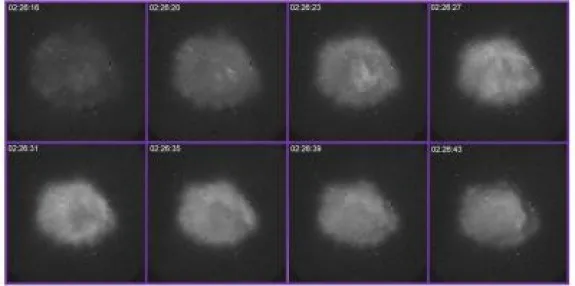Lighting Up the Arctic Sky With Artificial Aurorae
The U.S. military’s Naval Research Lab teamed up with university researchers and defense contractors to set the atmosphere aglow
/https://tf-cmsv2-smithsonianmag-media.s3.amazonaws.com/filer/2013022711003202_27_2013_alaska-aurora.jpg)
In November, high above the Alaskan sky, a pulse of high-powered emissions from the HAARP array—a grid of radio transmitters that can pump high-frequency radio waves up into the atmosphere—kicked off a display of man-made aurorae, more brilliant than any that had come before.
The U.S. military’s Naval Research Lab teamed up with university researchers, partners from defense contractor BAE Systems and others, says a NRL release, to set the upper atmosphere aglow. The scientists used the HAARP transmitters’ radio waves to increase the density of electrons high up in the ionosphere. (HAARP stands for High Frequency Active Auroral Research Program.) This isn’t the first time the HAARP team has made an artificial aurora, but the new developments suggest they are gaining more control over the process.
“Previous artificial plasma density clouds have lifetimes of only ten minutes or less,” said Paul Bernhardt, Ph.D., NRL Space Use and Plasma Section. “This higher density plasma ‘ball’ was sustained over one hour by the HAARP transmissions and was extinguished only after termination of the HAARP radio beam.”

Differing from the awesome displays of the true aurorae, HAARP’s artificial displays are much weaker. Though they can be seen in normal visible light, the artificial aurora are most easily detected with high frequency radio sensors. Producing visible light with a wavelength of 557.7 nanometers, the aurora would have glowed with a faint green color.
HAARP’s website explains:
The natural aurora is created when very high energy particles emitted by the sun, reach the Earth’s vicinity, are swept toward the Earth’s magnetic poles, and collide with gas molecules existing in the upper atmosphere. The energy involved in this process is enormous but is entirely natural and it has been a normal event throughout Earth’s history.
HAARP is so much weaker than these naturally occurring processes that it is incapable of producing the type of optical display observed during an aurora. However, weak and repeatable optical emissions have been observed using HAARP (and reported in the scientific literature) using very sensitive cameras.
H/T to Jenni Kissinger.
More from Smithsonian.com:
Breathtaking Photos of the Northern Lights
Gaze at the Aurora Borealis
/https://tf-cmsv2-smithsonianmag-media.s3.amazonaws.com/accounts/headshot/smartnews-colin-schultz-240.jpg)
/https://tf-cmsv2-smithsonianmag-media.s3.amazonaws.com/accounts/headshot/smartnews-colin-schultz-240.jpg)